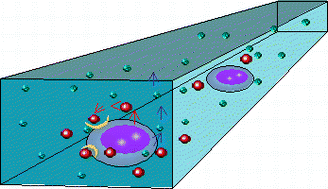Diffusion dependent cell behavior in microenvironments
Abstract
Understanding the interaction between soluble factors and cells in the cellular microenvironment is critical to understanding a wide range of diseases. Microchannel culture systems provide a tool for separating diffusion and convection based transport making possible controlled studies of the effects of soluble factors in the cellular microenvironment. In this paper we compare the proliferation kinetics of cells in traditional culture flasks to those in microfluidic channels, and explore the relationship between microchannel geometry and cell proliferation. PDMS (polydimethylsiloxane) microfluidic channels were fabricated using


 Please wait while we load your content...
Please wait while we load your content...